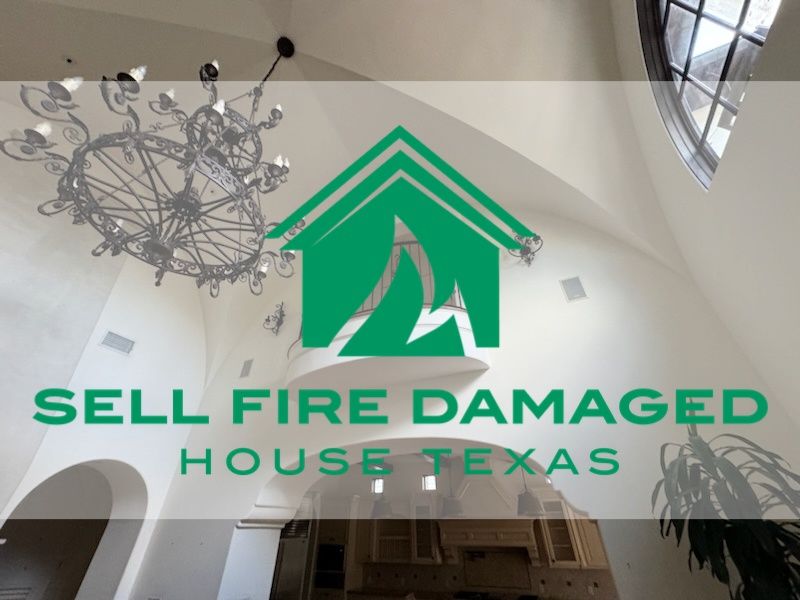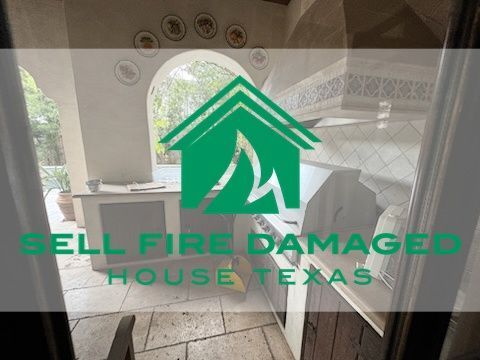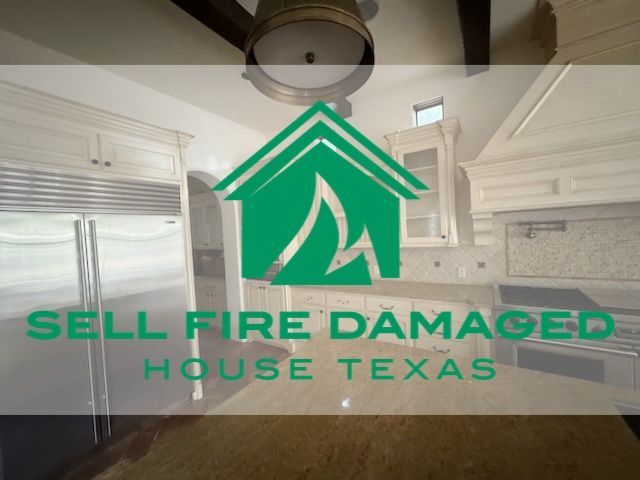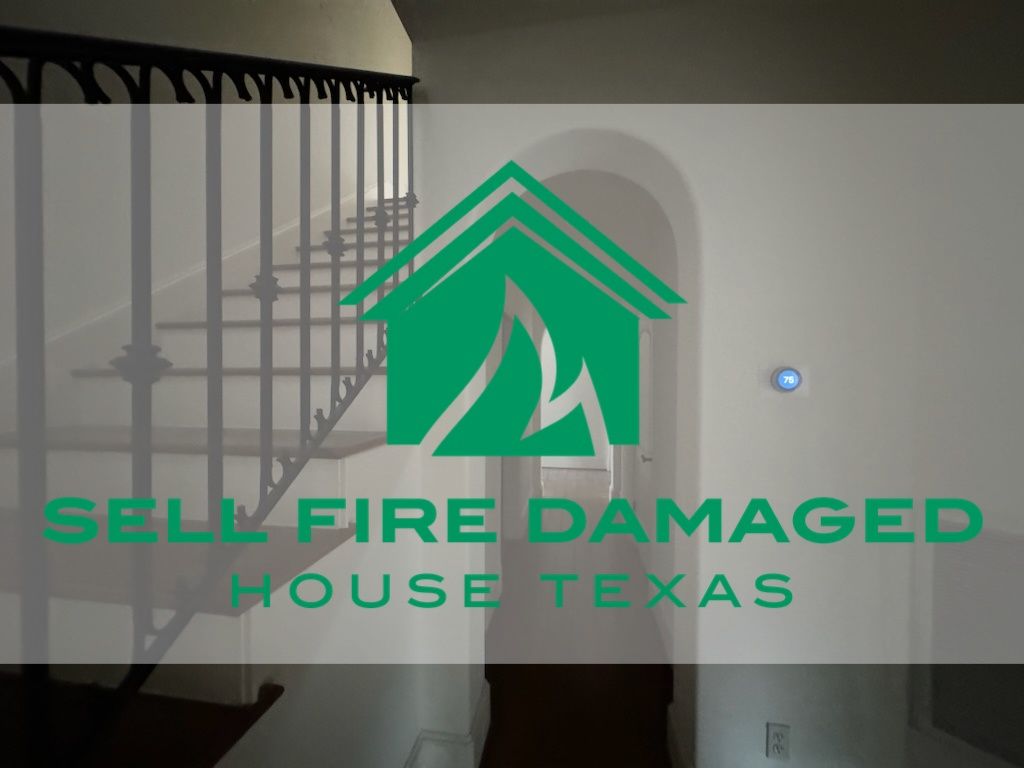Lay Out And Practice A Home Fire Escape Plan In Texas — Guide
Published on July 27th, 2025
Mia Bennett
AUTHOR
Free Offer Form
In Texas, creating a home fire escape plan is critical for safety—state law (Texas Health & Safety Code § 792.014) recommends working smoke alarms in every bedroom and multiple exits per room. Some cities, like Houston, enforce stricter rules requiring landlords to provide fire extinguishers in multi-unit buildings. Practice two-way exits, designate a meeting spot, and ensure everyone knows 911. If your property has fire damage, you can sell as-is to us and skip the lengthy and costly repairs—we buy homes fast, hassle-free.
Fire drills are an important aspect of safety that can help individuals learn what to do during an emergency.
This guide simplifies creating and practicing a home fire evacuation plan, and covers the following:
- The importance of having a plan
- How to create a comprehensive plan
- Practicing the plan
- Considerations for high-rise and condo living
- Tips to reinforce safety habits
- Regularly checking and updating the plan
- Required fire emergency equipment
With proper planning and execution, you can avoid being injured by the flames, and everyone in the household can prepare to escape in the event of a house fire.
Importance of a Home Fire Escape Plan In Texas
Knowing the value of a fire escape plan comes from seeing the risks of not having one and the benefits of implementing one.
Without a plan, fires can cause confusion and slow escapes, which is life-threatening. With a plan and enough practice, everyone can stay calm and leave the house quickly and safely.
Consequences of Residential Fires
In the 2021 report from the National Fire Protection Association (NFPA), there were over 353,000 residential fires in the U.S.
These fires caused over 2,840 deaths, 11,400 injuries, and almost $8.9 billion in damages.
Note the risks of not having a fire emergency escape plan:
- Death: Home fires can result in a loss of life.
- Injuries: Common injuries include burns, smoke inhalation, and fractures.
- Emotional Trauma: Fires can cause stress, anxiety, and long-lasting emotional effects.
- Property Damage: Flames can destroy homes. However, knowing what happens to property values after a fire can help homeowners recover from financial losses and displacement.
- Environmental Impact: Smoke pollutes the air and damages the environment.
Advantages of a Pre-Defined Fire Escape Plan
Having a predefined fire escape plan is crucial for the family's safety in case of a home fire. Implementing a plan offers several important benefits:
- Save lives: Every second counts during house fires; a pre-planned escape route can save lives.
- Reduced panic and injuries: A practiced plan can help people stay calm and avoid injuries.
- Faster evacuation: Knowing the escape routes in advance can help everyone evacuate the building quickly and safely.
- Protects property: It gives the fire department more time to contain the flame and save property.
Legal compliance: In many areas, having a fire escape plan, along with smoke alarms and fire extinguishers, is legally mandated.
Assembling a Thorough Home Fire Escape Plan In Texas

A meticulously crafted home fire escape plan empowers every resident with clear, immediate response protocols.
We'll discuss the following parts of a fire escape plan in order:
- Identify the safe ways out
- Pick a safe evacuation spot outside
- Place smoke alarms strategically
- Ensure everyone can use the plan
- Keep paths clear
Identifying Evacuation Paths
First, identify all potential evacuation paths and exits to create a fire escape plan.
This means identifying two escape routes from each room and ensuring there are alternative exits — windows, doors, and other points of egress.
Designing Two Exits from Each Room
Having a backup exit is important because not every way out may be usable during emergencies.
Make sure each room has two exits, like doors and windows that are simple to open. Keep the necessary keys close by. Show everyone different escape routes in case the main one is blocked.
Put a map of these exits in every hallway and mark the exits clearly.
Evaluating Doors, Windows, and Alternative Exits
Check that alternative exits like doors and windows are in good condition and easily-accessible.
Verify that they open easily and are clear of blockages like furniture or security bars.
Double-checking their accessibility is just as important as securing a second exit. You don't want your efforts in securing two exits to be in vain.
Establishing a Pre-Selected Gathering Spot
Select a safe and easily accessible meeting place outside your home — a safe distance from the house.
This safe meeting place is where everyone should assemble after escaping to quickly account for all occupants — this could be at a neighbor's house, near a stop sign, or at a community playground.
Mark the spot on your evacuation plan and ensure firefighters can easily see your house number from the street.
REMEMBER: Never allow any family member to return to the still-burning building for any reason, and notify the fire department immediately if anyone is missing.
Incorporating the Position of Smoke Detectors
Smoke detectors are essential for early warning of flame or smoke.
According to the National Fire Protection Association, there should be at least one smoke detector installed in the following locations:
- Every sleeping room
- Outside each sleeping area
- On every level of the home
Mark sure every fire alarm is properly installed at the best locations for smoke detectors and interconnected so that when one smoke alarm sounds, the rest do.
Provisions for Disabilities and Impeded Exits
Proper smoke detector positioning is crucial, but it's also important to consider the needs of everyone in your household.
Assign a buddy system or backup person to assist those who require it during fire drills and emergencies, and make sure everyone knows the emergency phone number of the fire department.
Practice executing a fire drill at least twice a year to ensure everyone knows what to do during a fire emergency.
Even overnight guests must know your fire evacuation plan.
Execution of Your Home Fire Escape Plan In Texas
Once your fire escape plan is ready, you'll need to properly implement it.
You'll need to do the following:
- Keep escape paths clear
- Practice the plan regularly
- Keep a copy of the plan easily accessible
Ensuring Unobstructed Evacuation Paths
Items that clutter your home's evacuation paths can hinder your chances of escaping during a real fire.
Again, identify two escape routes out of each room and double-check doors and windows' safety.
Regularly declutter hallways, stairs, and exits to ensure people can leave the home quickly, and check that your planned evacuation routes are free of obstructions.
Regular Drills and Acquaintance with Plan
An emergency escape plan should be regularly practiced at least twice a year.
Familiarize your family with fire prevention equipment like smoke detectors, fire extinguishers, and emergency release devices.
This will help to accommodate any potential changes in the layout of the home, among other factors, and offer an opportunity to ask questions and clarify directions.
Regular drills ensure that everyone in the house understands their role in the evacuation process and is clear on the escape routes, procedures, and safe meeting place.
Documentation of the Escape Plan
Documenting your fire escape plan and ensuring everyone in the house has a copy is important.
This includes the location of every smoke alarm, the evacuation routes, and the predetermined safe meeting place.
Draw a floor plan showing all exits and evacuation routes and share it with every household member. Teach children about it.
Firefighters may also be able to use your home's floor plan to quickly navigate through the burning building.
Fire Safety Protocols for High-Rise and Condominium Structures in Texas
If you live in a tall apartment building or condo, it's important to know extra safety steps for fires.
Acknowledging the Distinctive Hazards
The distinctive hazards of high-rise buildings and condominiums include smoke inhalation, smoke spread through ventilation systems, blocked exits and shared hallways, longer evacuation times, and balcony risks.
Knowing your building’s evacuation routes can help mitigate any potential risks.
Always close every door when you leave your unit to slow the fire's spread and use stairs to exit quickly.
Familiarity with All Exit Stairways and Evacuation Paths
Familiarize yourself with alternative exits on each floor, and always use stairs instead of elevators.
Unit owners can stop the spread of the fire safely by closing every open door, using wet towels to seal door cracks, and covering vents to block smoke.
Open windows of your condo or apartment building only if you're on the side away from the flame and need to signal for help to inform firefighters of your location.
If the flames are coming from your room, it's strongly recommended NEVER to open windows (except when using them as exits), as strong winds could come in and further add to the danger.

Reinforcing Fire Safety Practices In texas

Reinforcing safety practices means promoting regular fire drills and ensuring your home's firefighting equipment is well-maintained and functional.
Adopting Fire-Resistant Habits
Flame-resistant habits are simple steps to help protect people, your property, and even your neighbor's home by stopping fires.
Essential flame prevention habits include:
- Not leaving cooking unattended
- Not overloading electrical outlets
- Installing and regularly checking every smoke alarm within your home
- Having enough extinguishers available
- Regular appliance maintenance
- Not using flammable materials near open flames
- Conducting home fire drills twice a year
Emphasizing Fire Readiness
Planning and practicing fire safety means checking your safety gear often, using appliances wisely, and teaching all of your family members about flame dangers and what to do if a smoke emergency happens.
This includes learning how to use fire extinguishers and knowing the way out.
A
well-planned and practiced home fire drill is key to fire readiness.
Maintenance and Review of the Fire Escape Plan in Texas
It's important to regularly review and update your fire escape plan to ensure that it stays effective.
This involves the following:
- Assessing and updating the plan periodically
- Informing new family members or condo owners about the plan
Periodic Assessment of the Plan
It's crucial to regularly review and practice your home fire drill plan, especially after changes like renovations or when new people move in.
This periodic assessment helps ensure the plan still works well and meets everyone's needs. By keeping the plan up-to-date, you can make sure it's always ready to guide everyone to safety during a fire.
This can help prevent injuries or loss of life and minimize property damage in case of a fire.
Updating the Plan as Necessary
A fire escape plan is a crucial lifesaver in an emergency, but it's not a "set it and forget it" document. Just like fire drills and equipment, your plan needs regular maintenance.
Regular updates can keep the plan accurate and ensure that all escape routes are current and everyone knows their role.
This ongoing maintenance assures that your plan adapts to any changes to guarantee everyone's safety.
Informing New Family Members about the Plan
Simply updating your fire escape plan isn't enough; it's essential to communicate any changes to your family or roommates.
This ensures everyone, old and new, understands the latest evacuation procedures and escape routes.
This way, everyone knows how to get out safely and can ask clarificatory questions as needed. It helps make sure the whole family is ready and safe.
Utilizing Fire Safety Equipment in texas
Utilizing fire safety equipment such as smoke alarms, fire extinguishers, and fire escape ladders is crucial for protecting your home and family from the flame.
Installation and Use of Smoke Alarms
Proper installation and use of smoke alarms are crucial in reducing deaths and injuries.
This practice helps keep you safe by alerting you as soon as they detect the first sign of smoke so you and your family can get out fast.
Install smoke alarms in every room, close to where people sleep, and on each house floor.
Check them every month to ensure they work, and change the batteries yearly. This practice helps you stay safe.
Availability and Use of Fire Extinguishers
Practice putting these extinguishers in spots where you can easily see them and grab them — usually near a smoke alarm, in hallways, near exits, and in high-risk areas.
Also, teach everyone in your home how to use them.
The easiest way to use an extinguisher is to remember the acronym "PASS":
- Pull the pin
- Aim the nozzle at the fire's base
- Squeeze the handle
- Sweep the nozzle side to side
Use of Fire Escape Ladders in Multi-story Homes
If you live in a multi-story home, it's essential to practice a fire escape plan.
Install portable ladders for upper-level windows, store them near windows and door entrances, and practice deploying them during drills.
Fire escape ladders provide an alternative emergency escape route and can save the lives of every family member.

Frequently AskedQuestions
Find out more about planning and practicing a house fire evacuation plan with these questions.
What Should a Home Fire Escape Plan Include?
A comprehensive fire escape plan includes clear evacuation paths, alternative exits, a safe meeting place, provisions for disabilities, and the inclusion of fire safety equipment.
How Often Should We Practice Our Home Fire Escape Plan?
Practice your escape plan twice a year and update it as needed.
What Are Some Fire-Safe Habits to Develop?
Some house fire prevention tips include the following:
- Not leaving cooking unattended
- Avoiding overloading outlets
- Checking every smoke alarm
- Having extinguishers ready
- Storing flammable materials a safe distance away from heat and open flames
How Do I Plan for Special Considerations Like Disabilities in My Fire Escape Plan?
Help those with disabilities by planning accessible exits and designating specific family members to assist any disabled relatives.
What Should I Do if an Exit Is Blocked During a Fire?
Use a different escape route. If all exits are blocked, stay in a room, seal it from smoke, open a window enough to breathe, and signal for help.
Conclusion
By familiarizing oneself with exit routes, a designated outside meeting place, and specific steps to follow during emergencies, panic can be contained, and everyone can exit quickly and safely.
Again, the main steps in making an effective home fire escape plan include:
- Identifying Evacuation Paths
- Establishing a Pre-Selected Gathering Spot
- Incorporating the Position of Smoke Detectors
- Provisions for Disabilities and Impeded Exits
Importantly, practice your escape twice a year, keep fire drill plans updated, and call the fire department immediately in case of a fire!

